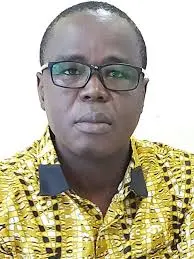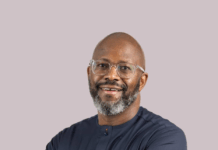Over the last five years, Ghana has seen radical policy changes in its educational structure. Arguably, these policy changes are geared toward long-term economic and social transformation.
The recent introduction of a new curriculum for KG1-Basic schools and the new Common Core Curriculum for JHS1-SHS1 attest to radical policy changes in the education sector. Besides, the Public University bill is still under consideration for the reform of tertiary education to reflect the country’s human resource and manpower needs. It is expected that when the bill is passed by Parliament, the new legislation will not only change the face of tertiary education in Ghana but also signal a paradigm-shift in the country’s long-term development – unless it is overturned by another government.
New Educational Reforms
The new educational reforms announced a few weeks ago by the Ministry of Education and Ghana Education Service further demonstrate Ghana’s desire to transform the structure of education – from the basic to highest level – to reflect the global trends in human resources and manpower development. Honestly, past reforms in the 1980s (which introduced the Junior Secondary School) not only destroyed the foundation, but also undermined the quality of Ghana’s education system.
The New Educational Reform has the following top changes:
- Kindergarten, Primary School, JHS and SHS will be known as basic school. JHS 1, 2, 3 and SHS 1 will now be referred to as BS 7, 8, 9 and 10 respectively (i.e. SHS 1 will now be called BS 10).
- All students in JHS 1 – SHS 1 will run a common core programme (CCP) that comprises 9 subjects: namely Math, Languages, Science, RME (standalone subject), Physical and Health Education (not examinable), Career Technology, Social Studies, Computing and Creative Art & Design.
- A new examination called the National Standard Assessment Test (NSAT) will be conducted at Primary 2, 4, 6 and JHS 2.
- BECE will be replaced by placement examination at JHS 3 to enroll students into SHS 1.
- Students in SHS 1 will continue to run the common core programme for one year; hence, students into SHS 1 will not select Science, Business or Arts programmes.
- At the end of SHS 1, students will write a common core exam for entry into SHS 2.
- At SHS 2, students will have to select a career-related programme that includes vocational and technical programmes or science, business or art.
- This means Elective subjects will start in SHS 2.
- WASSCE will be replaced by a university entrance exam at SHS 3.
- Students after successful completion of SHS 3 will be rewarded a Diploma Certificate instead of WASSCE certificate.
Investments in education
I think the recent educational reforms in Ghana were designed to draw the best out of both low and high performers. Across the world, investment in education has become a focus of economic development policy since it can be considered an investment in human capital for future benefits. Some experts have outlined mechanisms through which education can affect future economic growth.
Firstly, quality education can increase the human capital of the labour force, increasing labour productivity and enhancing transitional growth toward a higher level of output. Secondly, quality education can increase the innovative capacity of the economy, which promotes indigenous economic growth. Thirdly, quality education can facilitate the transmission of skills and knowledge needed to understand and process new information – which again promotes economic growth. Thus, it is expected that the current reforms will not only reestablish Ghana’s education system as the foundation for future development, but also make Ghana’s human resource competitive globally.
Quality or quantity?
Previous studies on the impact of education on society found that though many factors determine economic growth and development, the educational achievement of a population is extremely important for long-run growth. For this reason, policy must be focused on both quantity and quality. Specifically, the role of school quality (as a determinant of economic growth) has attracted local and international commitment to improving the education systems in developing countries.
The attention to developing countries stem from the fact that quality education reduces inequality within a country, and increases economic growth. Most policies focusing on providing basic education – such as literacy for all children, youth and adults, argue that basic education directly impacts all aspects of human development. It is one of the most cost-effective ways to achieve long-term economic growth and sustainable development.
The general notion is that a skilled labour force is required for the technological progress which will eventually lead to economic growth, especially in developed countries. This stance suggests that the low achievers deserve the same attention and concern as high achievers. In other words, an equitable system needs to ensure that all students are given opportunities to flourish. This is because the prosperity and civic health of any country largely depends on both low and high achievers.
MDGs and SDGs
In 2000, the United Nations established the Millennium Development Goals (MDG) to demonstrate a global commitment to provide inclusive education. The second MDG goal was Universal Primary Education, to be achieved by 2015. The goal was also consistent with the global call ‘Education for All (EFA)’ by 2000. Both the MDGs and EFA goals recognise that quality is a critical issue which should be monitored by stakeholders. But over the years, the ease of measuring school completion and ability to assess progress toward specific goals sidelined the qualitative issues of schooling. Especially in Ghana, students at both levels were just massed-produced without any technical, vocational, entrepreneurial or general-employment skills.
Similarly, the Jomtien Declaration in 1990 to promote Education for All (EFA) by the year 2000 was reinforced with the 2000 Dakar Framework for Action. These declarations – further articulated in Sustainable Development Goal 4 – have informed policies on education around the world. Consequently, the level of literacy among people globally has progressed in the last five decades because of significant improvements in school enrolment. For this reason, Ghana can ill-afford to lag behind in using policy and investments to match its contemporaries in both quantity and quality education.
Literacy rates
It is unclear whether Ghana is doing well or badly in literacy among all age groups. A recent study on literacy-rate by Ghana Statistical Services (GSS) reveals that 7.9 million Ghanaians aged six years and older are illiterate. This means they cannot read and write properly, or cannot read and write at all. This figure is broken down into 4.6 million illiterate females and 3.3 million illiterate males; indicating a female disadvantage that has been persistent over time.
The report also finds that between the 2010 and 2021 Population and Housing Censuses (PHC), an additional 1.2 million illiterate adults (15 years and older) have been added to the population. The above statistics suggest that Ghana has lower levels of adult literacy compared to its comparators (lower middle-income sub-Saharan African countries), despite three years of interventions to reduce illiteracy as outlined in the Education Strategic Plan (ESP) 2018-2030).
The report indicates that literacy rates among populations six-years and above in nine out of the 16 regions are below the national figure (69.8%), with Greater Accra Region (87.9%) recording the highest while Savannah Region (32.8%) recorded the lowest. The figures from Savanah Region are very alarming, to put it mildly. In fact, previous reports on educational performance in the northern regions suggest that, of all districts, those in the current Savannah Region had the highest number of poor-performing districts for education.
The report further notes that four out of the 16 regions have more than three-quarters (75%) of their population six-years and above being literate, with Greater Accra Region (87.9%) recording the highest and Savannah Region, again recording (32.8%) the lowest. This makes it compelling for administrators of the new region to engage in a visioning and stakeholder consultation to reverse the region’s downward trend in education.
This situation aside, the report provides direction for stakeholders to target hotspots and drivers of illiteracy in Ghana as it focuses on three broad areas: trends, patterns and correlates of illiteracy.
Literacy and economic growth
As indicated earlier, several studies demonstrate that literacy and formal education are two key indicators for measuring socio-economic development. Formal education plays an important role in the socio-economic development of a country, as it equips individuals with the necessary knowledge and skills to fully contribute toward the development of society.
According to UNESCO, the four pillars of education for the 21st century comprise learning to know, learning to do, learning to live and learning to be. These are tools which contribute to societal transformation and empower individuals to be useful to themselves and society.
Furthermore, literacy is an essential component of the right to education and for accessing resources. Literacy is also an educational tool that promotes communication, self-expression, knowledge acquisition, ability to contribute ideas, and self-worth. Also, literacy interventions contribute to the empowerment of people – especially women and other disadvantaged people and groups. Literacy enables them to participate in social, economic, civic and cultural activities, and promote equality in all aspects of life. In particular, the cognitive, psychological, socio-cultural and economic benefits of literacy programmes are well recognized; such as the high tendency of literate parents to enrol and keep their children in school.
Policy alternatives
Ghana has had various educational policies directed at providing knowledge and skills for the individual, societal transformation and socio-economic development. The 1992 Constitution, under Article 25 (1), guarantees the right to education for all. It is for this reason that Ghana has subscribed to the concept of Free Compulsory Universal Basic Education (FCUBE) and Free Senior Secondary School Education to achieve SDG4. These policies have sought to promote inclusion and equitable quality education, lifelong learning, and human resource development opportunities for all.
In other words, Ghana cannot afford to leave any child behind. To include every child in education, our policy must be motivated by the possibility of improving both the quantitative and qualitative measurement of schooling. This will hopefully help Ghana achieve the economic growth necessary to increase the active population’s level of income. To this end, improving literacy across all age groups is critical to the country’s future progress.
Resource allocation
Given the exigency of educational reforms, it is significant for policy makers to determine how our scarce resources should be administered to achieve a higher economic growth through education. This makes it imperative for relevant data on literacy and education to track compliance with the constitutional provision and international commitments, as well as assess progress in the country’s human development efforts for all. All said, policy makers must take serious action on the alarming rate of youth and adult illiteracy in Ghana. If the active working population of a country is receding into illiteracy, it signals a potential slump in economic development.










